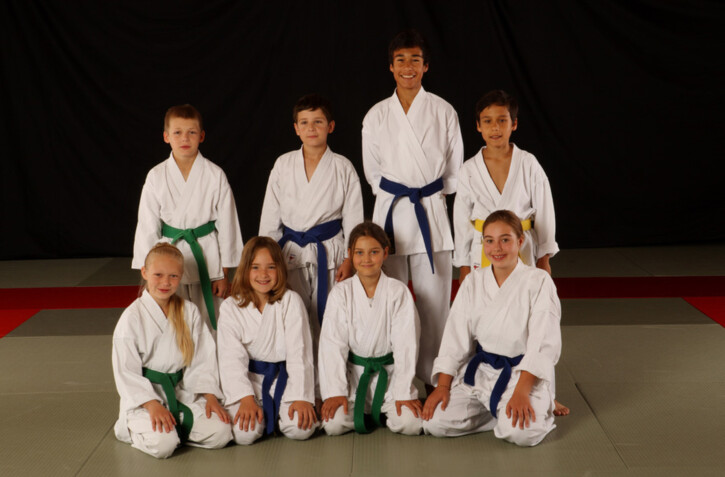Karate for children
For a karate enthusiast, training children and young people is probably one of the most rewarding tasks of all. But enthusiasm alone does not make a good children's trainer, because child-friendly training is not just "adult training lite". Introducing young karatekas to their potential requires a lot of sensitivity and patience. The sensei (teacher) should not only be a role model, but also a motivator, coach and entertainer. The children's natural instinct to play must be taken into account in training, otherwise the trainer quickly loses his effectiveness and enthusiasm for the training wanes. No seal of approval in the world is therefore as reliable a sign of child-friendly training as the number of children who have been with the school for many years. There are many reasons for attending karate training for the first time. Most of the time, children are simply inspired by word of mouth from their "friends". However, it is not uncommon for the initiative to come from the parents. They formulate goals for their children such as improving concentration and perseverance, the ability to defend themselves or strengthening self-confidence. In accordance with the requirements, it is our aim to challenge and encourage as individually as possible. The shy child should be given the opportunity to strengthen self-confidence,
while for the more aggressive child the focus is on self-discipline and control. A typical training session begins with a warm-up session lasting around 10 minutes, in which the body is prepared for the subsequent stresses and coordination skills and sense of balance are trained. Subsequent training units in the elementary school (Kihon) promote technical skills and endurance.
Free fighting (Kumite) with a partner not only trains the development of a sense of timing and reaction ability, but above all also helps to better deal with one's own aggression and self-control. For example, there is an absolute ban on contact with techniques to the head, while techniques to the torso must be carried out in a controlled manner (light contact). Considerate behavior and respect for the training partner is expected. Short interludes between the individual training units serve to strengthen the muscles, improve striking power or simply to loosen up the training session. The reward for our efforts is to see how the children develop over the years and grow into mature personalities. Of course, we are very aware of our own subordinate role in the development of children. Nevertheless, we are also a little proud of it.
Ernst Dossenbach


